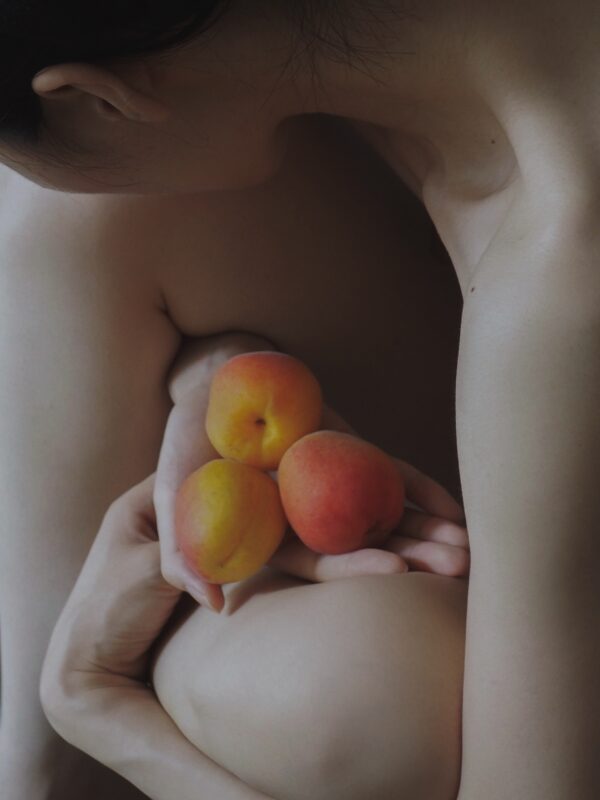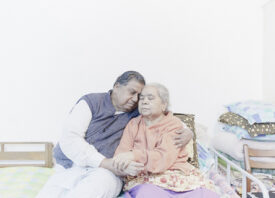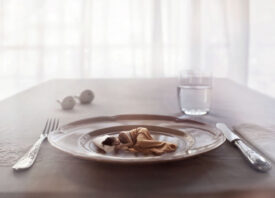Search this site
Ziqian Liu Creates Fragmented Images of the Self in her Ethereal Portraiture

An ethereal touch, a ghostly presence, a soft whisper of a still life: these are the tender elements present within the work of Ziqian Liu. She creates photographs that capture a sense of nostalgia, but with a modern aesthetic. Fleeting reflections of the artist are included in almost every photograph, hinting at self-portraiture but with an air of mystery—like a moment we cannot remember, fragmented in our memory. The Shanghai-based artist cleverly uses simple objects like a hand-held mirror or a piece of fruit to create undeniably striking compositions. The distinct simplicity and balance in her work invokes a feeling of satisfaction, something Liu says she strives for when constructing her compositions. Her minimal sensibility and attention to the form of the human body create spellbinding images that will have you look and look, and then look again.
What led you to photography? How long have you been working in the medium?
Thanks to a gap in time after graduation—which has been mentioned in other interviews—I began shooting photos, mainly because of the constant struggle to find a stable job and immediately start the stable life that I wanted at the time. I had been traveling with my friends on and off for a year or two. This experience made me feel a lot of anticipation. Although I got rid of my previous sense of urgency, I really wanted to find a gate to let the emotions that had been deposited in my heart release slowly. So, I picked up the camera.


Your exquisite self-portraits play with shadow and reflection. When did you begin experimenting with props such as mirrors, flowers, and fruit? Are you purposely using objects such as these to invoke a feminine sensibility, as flowers and fruit are often used as feminine symbols?
I’ve always loved mirrors and flowers and fruit, and I do use them to help me reflect feminine elements in my work. More importantly, I wish to give the audience a quiet, small world, but at the same time one that is not flat. I want to show women outside the soft and delicate. I want to show their inner strength, gentle and strong coexistence, as this is also my own expectation.
Flowers and fruits are related to a common theme in my work, which is the symbiosis between human beings and nature. To some extent, it can be said that human beings and the rest of the natural world are equal; we live in the same world, breath the same air, we have mutual tolerance. In my work, I try to find a state of harmony between human and nature, full of peace and emotion, because in this state of symbiosis, beauty will be most embodied.


Your use of mirrors tends to isolate and dismember body parts like a hand or an eye. Are you using this visual device to create a psychological tension?
Actually, I am not. The use of mirrors is related to another theme of my work, which is about perspective. Things we are familiar with often remain in a fixed image, but I am trying to convey through my work that if we look at the same thing from different angles, there will be different findings. This is not only for things, but also for understanding others and our hearts.
Moreover, I have always had a world in my mind where everything is in balance, because symmetry and perfect order have always been my innermost longing and ideal state of existence, whether it is the appearance of things or the pattern of interaction between people. But, after all, society is not balanced—the so-called imperfect will reflect the real existence of society. The reflection of the mirror expresses the fusion of the reality and the world in my mind.


The positions of your body in your self-portraits seem perfectly placed, almost like choreography. Do you have a background or interest in dance?
I studied dance for a few years when I was a kid.

Would you say you have a minimalist approach when it comes to your creative process as a photographer?
I’m a big fan of minimalism, and the fact that I often highlight parts and limbs in my work may be a sign of minimalism.
First of all, I like clean images; I think the body or parts of the body look very pure. In addition, I think the body can indirectly show the emotion I want to express—it will be gentler than the face.
When I focus on my body, I naturally let go of some of the restraints. The so-called bondage is not only the superfluous clothes, but also the symbol of some trivial and disorderly thoughts in my life. Space and time can be said to be entirely my own, and I can express what I want to express very purely. It is really a release of the brain. So, letting go of clutter can be a form of emotional simplification.


Your compositions are gorgeous in their simplicity. Do you do much editing to your photographs after they are taken?
I will only make some simple adjustments during the editing, which almost takes 20% of the work—especially when it comes to the reflection in the mirror. I have to find many angles to find the most satisfying one, so the most important part is shooting.

What other photographers do you look to for inspiration, contemporary or otherwise?
I look at a lot of photographers’ work. I also find inspiration in some paintings, and from everything around me in my life. Even observing the random movements of people passing by, I will incorporate this into my work.



